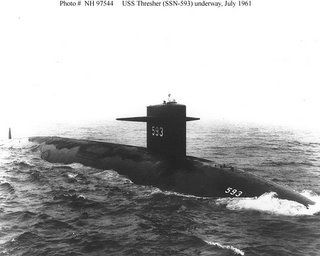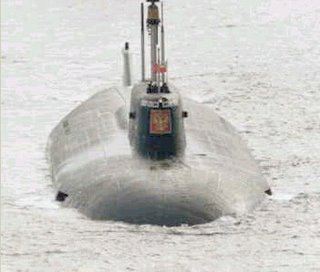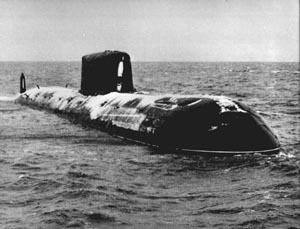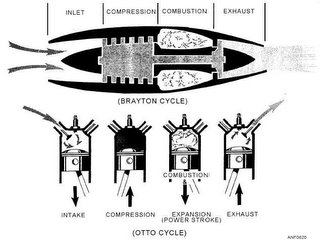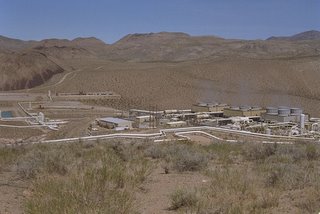The markets were ugly all around yesterday, with the exception of commodities.
The dollar and bonds both got pounded, and equities (again with the exception of commodities producers) got walloped. On huge volume.
So...
Is this just a correction in the "what, me worry" market, or does this mark the recognition that the economy isn't all that great? That's the $64,000 question I'm asking myself.
The market gyrations aren't affecting my net worth - increasing it, in fact. I'm positioned for an ugly bear market, which is where I believe things are headed. While there is some gratification at (maybe) being right, I don't take any cheer from the fact that I'm making money as the economy tanks. I'd rather be investing in small scrappy up-and-coming companies with great products. Unfortunately I don't think the US consumer has the cash to buy those products any longer. Joe six is
up to his eyeballs in debt. And unfortunately our economy (70%) is dependent on Joe spending every nickel he can lay his hands on.
The economic recovery from the recession of 2002 is the weakest job creation recovery on record, even with skewed statistics. It's been fueled by debt (private and government), and focused in the real estate sector and service sector (finance, recreation, food services), rather than in manufacturing or tech. So it's also a non-productive recovery. Ugly.
This may be the test that Bernanke will have to pass in order to gain credibility as an inflation hawk. Time to see if the man behind the curtains is in fact a *man* (as opposed to a mouse).
I'm already on the sidelines for the most part, with small positions in GLD, SLV, BEARX, GSK and WMB. WMB performance leaves a bit to be desired, but it's <1 a="" href="http://en.wikipedia.org/wiki/Stagflation">stagflation - which I believe is what we are starting to see.
Why do I believe this is what is happening, in spite of the headlines of great employment, great GDP (gross domestic product) numbers, record corporate earnings, and endlessly low core CPI (consumer price index) numbers?
Let's start with
employment. April employment was up 138K. Not stellar - economist's concensus was in the 200K range. Worse, the new "business birth/death" adjustment probably accounted for most of the "new" 138K jobs. Without this adjustment, perhaps *no* new jobs were actually created in April. I'm not able to tell how the adjustment skews the results, but I'm confident that it paints a rosier picture than the reality it is supposed to represent.
Let's look at unemployment. In April it was 4.7%, quite low historically. At this low number (think late 1999 early 2000), employees were asking for and getting raises, perks, stock options, and reserved parking places. This time around it doesn't feel like that, does it? Rhetorical question... The 4.7% figure only includes people who have "actively looked for a job in the past 90 Days". So if you've given up looking for a job that you are qualified for (as opposed to a McJob without benefits), you are *not* unemployed. Congratulations for no longer being unemployed!!! Some conjecture that actual unemployment is closer to 9-10% than to 5%.
GDP is another heavily adjusted statistic, one that states the economy is doing better than it really is. If you are interested, in how it's manipulated, please click the link.
The
CPI is one of the most highly manipulated and suspect numbers of the bunch. Energy and food are stripped out (allegedly because they are volatile). Housing cost to the consumer is manipulated by using rent equivalent - why is this so when the government likes to crow that home-ownership is at an all-time record high - nearly 70%? Why are we examining the other 30%?
We all intuitively know that inflation is rampaging. The only things going down or staying consistent in price are the items you don't need - discretionary spending. Flat screen TVs, Laptops, DVDs - things you can't eat or heat with - are going down in price. But... if you have to mail a letter, drive to work, eat, use cable, water, or electricity, prices are going up - often in double digits.
Lastly, I want to point to the
decline in the dollar vs. a basket of foreign currencies. There is beginning to be a lack of faith in the value of the dollar. Actually this is a rather short term trend... the lack of faith (and the downward trend) goes back further, and the trend is resuming its path downward. This is the reason that gold (and other commodities, from pigs to oil) is going up in 'price'. Because the $US is seen more and more as monopoly (play) money, rather than value. And this is going to be Bernanke's litmus test.
Will he raise rates as high as they need to go to protect the value of the dollar? Because to do so, he will crush the US economy and the debt-laden Joe Sixpack. Mouse or Man? Time will tell!

